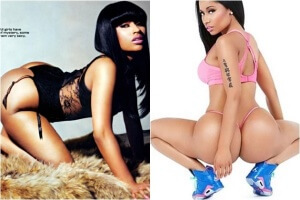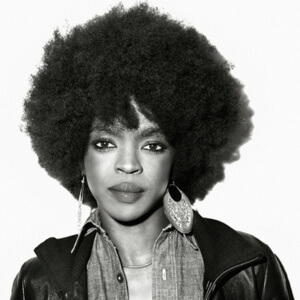Nothing has changed. The slave-master paradigm has simply shifted to the creative sphere of rap music. The master being the white record label owner, the slaves, the creative black youths and the plantation, the extremely lucrative hip hop industry which is estimated to make over $13 billion a year.
The  music industry profits off of innovative black minds but our bodies too with Black women being the hapless victim. Using black bodies as capital in the music industry in order to sell and popularize hip hop music, draws sinister parallels with slave capital. Black women in the slave system had two functions: to breed the next generation of slaves; and to satisfy white colonizers sexual needs, with the former being pivotal to assuring the centuries long Trans-Atlantic slave trade. Colonizers viewed black women’s figures to be hypersexualized and therefore they thought they were justifiable in their violations. However, currently this projection of ‘sexually-deviant behavior’ on black women is being perpetuated by some of our brothers in the music industry. MTV is bombarded with rap songs littered with ‘bitch’ or ‘hoe’ as many times as the word ‘and’ or ‘the’. All while black video vixens dance seductively in the background upon a Mercedes (Oh the irony). It seems attitudes towards black women are stuck in the 18th century. Rather shockingly, the story of Saartjie Baartman is still shockingly relevant to many young black female hip hop artists in the industry. Saartjie Baartman was born in 1789, in South Africa and descended from the Khoikhoi tribe. She attracted attention from white colonizer due to her large buttocks and elongated labia (common features in her tribe). Consequently she was shipped to Europe where she ‘entertained’ audiences with her ‘exotic features; and became a cult in European culture.
music industry profits off of innovative black minds but our bodies too with Black women being the hapless victim. Using black bodies as capital in the music industry in order to sell and popularize hip hop music, draws sinister parallels with slave capital. Black women in the slave system had two functions: to breed the next generation of slaves; and to satisfy white colonizers sexual needs, with the former being pivotal to assuring the centuries long Trans-Atlantic slave trade. Colonizers viewed black women’s figures to be hypersexualized and therefore they thought they were justifiable in their violations. However, currently this projection of ‘sexually-deviant behavior’ on black women is being perpetuated by some of our brothers in the music industry. MTV is bombarded with rap songs littered with ‘bitch’ or ‘hoe’ as many times as the word ‘and’ or ‘the’. All while black video vixens dance seductively in the background upon a Mercedes (Oh the irony). It seems attitudes towards black women are stuck in the 18th century. Rather shockingly, the story of Saartjie Baartman is still shockingly relevant to many young black female hip hop artists in the industry. Saartjie Baartman was born in 1789, in South Africa and descended from the Khoikhoi tribe. She attracted attention from white colonizer due to her large buttocks and elongated labia (common features in her tribe). Consequently she was shipped to Europe where she ‘entertained’ audiences with her ‘exotic features; and became a cult in European culture.
The Slave Trade Act (1807) meant many abolitionists were campaigning for her release and end to her sexual  exploitation. Unfortunately Baartman fell victim to the vicious trio of capitalism, patriarchy and white supremacy and thus chose to remain as an exhibition, under the false pretenses that she was ‘liberated’. This attitude can be is also seen within, according to Forbes ‘Hip Hop’s Most Powerful Woman’- Nicki Minaj who has a personal fortune of $29 million. Minaj has profited off the media’s fascination with her curves. The Anaconda record where the public gets to appreciate every curve and edge of Minaj’s body, while she is sucking on a variety of phallic objects has 432 million hits. However this isn’t a time to attack Minaj, she is a victim, a well-compensated victim, but nevertheless a victim of what I deem ‘commoditive racism’.
exploitation. Unfortunately Baartman fell victim to the vicious trio of capitalism, patriarchy and white supremacy and thus chose to remain as an exhibition, under the false pretenses that she was ‘liberated’. This attitude can be is also seen within, according to Forbes ‘Hip Hop’s Most Powerful Woman’- Nicki Minaj who has a personal fortune of $29 million. Minaj has profited off the media’s fascination with her curves. The Anaconda record where the public gets to appreciate every curve and edge of Minaj’s body, while she is sucking on a variety of phallic objects has 432 million hits. However this isn’t a time to attack Minaj, she is a victim, a well-compensated victim, but nevertheless a victim of what I deem ‘commoditive racism’.
What are the effects on the rest of us young black women? Low self-esteem, a longing to conform to a video vixen  ideal and also colorism. Colorism, another divide and rule tactic implanted during colonization is further perpetuated by the commodification of black bodies. Hip Hop has digressed from the variety of black beauty such as; Queen Latifah; Lauryn Hill; Salt n Pepa; Mc Lyte; Foxy Brown and Lil Kim (pre-surgery). Through these hip hop queens we saw the multi-dimensional black woman, aware of her beauty but didn’t let that define her. Now black beauty is defined light skin, straight hair and slim figures, but fat in all the ‘right’ places. The Dark Girls and Light Girls documentaries poignantly depict the emotional distress of colourism and the tribalism in black culture. Backlash towards Kendrick Lamar’s light skin fiancée is emblematic of the sensitivities between light skin and dark skin women. Offhand playground remarks such as ‘Err she’s blick.’ ‘You’re not even black’ or ‘you’re pretty for a dark skin girl’ are all indicative of slave mentality. Twitter is a battlefield, littered with #TeamLightSkin or #TeamDarkSkin, this preferential treatment for certain shades of blackness impede the black community from reaching many shared goals.
ideal and also colorism. Colorism, another divide and rule tactic implanted during colonization is further perpetuated by the commodification of black bodies. Hip Hop has digressed from the variety of black beauty such as; Queen Latifah; Lauryn Hill; Salt n Pepa; Mc Lyte; Foxy Brown and Lil Kim (pre-surgery). Through these hip hop queens we saw the multi-dimensional black woman, aware of her beauty but didn’t let that define her. Now black beauty is defined light skin, straight hair and slim figures, but fat in all the ‘right’ places. The Dark Girls and Light Girls documentaries poignantly depict the emotional distress of colourism and the tribalism in black culture. Backlash towards Kendrick Lamar’s light skin fiancée is emblematic of the sensitivities between light skin and dark skin women. Offhand playground remarks such as ‘Err she’s blick.’ ‘You’re not even black’ or ‘you’re pretty for a dark skin girl’ are all indicative of slave mentality. Twitter is a battlefield, littered with #TeamLightSkin or #TeamDarkSkin, this preferential treatment for certain shades of blackness impede the black community from reaching many shared goals.
So how do we approach ‘commoditve racism’? Firstly as cliché as it sounds we need to undergo a deep healing process, in which we become comfortable with both our sexuality and blackness. How long this Page 2 of 2will take, no one knows. The commodification of black bodies is a culmination of the multitudes of structural forms of oppression which are rooted in capitalism. Black women are victims from the intersecting forms of oppression. So, what do we do until capitalism crumbles? As the Combahee River Collective Statement ( Aborigine Feminists) ‘If Black women were free, it would mean that everyone else would have to be free since our freedom would necessitate the destruction of all the systems of oppression”. Therefore we as black woman need to prioritize community activism; whether we are a cleaner or a lawyer, we are pivotal to the revolution. Lastly let’s love ourselves and not have hatred for different shade of black, but for the white elitists who have caused these tensions.
Maya Elese
Latest posts by Maya Elese (see all)
- REVIEW | REFLECTIONS ON CROSS THE TRACKS 2025 — June 16, 2025
- REVIEW | CROSS THE TRACKS 2024 IN LONDON’S BROCKWELL PARK — May 28, 2024
- INTERVIEW | ROC NATION SIGNED RAPPER & PRODUCER KAY YOUNG DISCUSSES HER NEW EP ‘MIDDLE MATTERS’ — September 3, 2020
